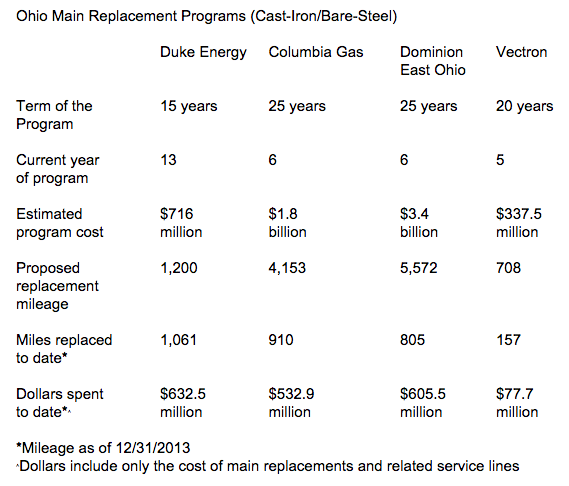COLUMBUS — In Ohio, more than 3 million people use natural gas, and the Public Utilities Commission of Ohio (PUCO) oversees more than 56,000 miles of distribution lines, which provide natural gas to individual users, as well as more than 10,000 miles of transmission lines.
Inspections
PUCO investigators inspect each natural gas pipeline system in the state at least once every two years and review records and procedures implemented by utilities.
When violations are detected, the PUCO orders corrective action and may assess fines and other penalties to ensure that Ohio’s natural gas pipeline systems continue to deliver natural gas safely and reliably.
What rules and regulations apply to natural gas pipelines?
Natural gas pipeline safety rules are developed by the U.S. Department of Transportation, Pipeline and Hazardous Materials Safety Administration. The state of Ohio has adopted the federal regulations and the PUCO enforces those regulations through a cooperative agreement with the federal government.
Ohio recently extended gas pipeline safety rules to gathering lines used to collect gas from drill sites — such as those in the Utica and Marcellus shale plays — that are not subject to federal safety rules.
What is the general condition of natural gas pipelines in Ohio?
The condition of Ohio’s natural gas pipeline network varies by operator. Each operator has the obligation to demonstrate that their piping is in a condition that meets or exceeds the minimum federal safety standards.
Most high pressure transmission lines are constructed with protected steel. Lower pressure distribution lines are made from plastic or steel, and older lines may be made from steel, cast iron or copper.
Each operator submits an annual report to the Pipeline and Hazardous Materials Safety Administration describing their pipeline network including the type of piping used and number of leaks detected and repaired. This data is available on PHMSA’s website.
Are operators required to replace pipes after they reach a certain age?
The pipeline safety regulations do not specify an age limit for pipelines, but instead rely on performance standards to ensure safety.
Among other criteria, pipelines must be protected from corrosion, have adequate wall thickness and be free of material defects. Pipeline engineers determine what segments of pipe may be at risk and require further evaluation.
The PUCO evaluates this information as part of its inspections.
What extra protections are in place for pipelines running through populated areas?
The pipeline safety regulations require operators to lower the maximum allowable operating pressure of the pipeline, increase the frequency of leak surveys and odorize gas so leaks can be readily detected.
What actions has the PUCO taken to increase natural gas pipeline safety above and beyond the federal pipeline safety regulations?
The PUCO has taken action to have some older piping materials removed and replaced. The PUCO recently required Ohio’s four major natural gas utilities to gradually update old cast iron and bare steel pipelines with more modern protected steel and plastic lines.
How are new pipelines built? Is there any oversight?
The Ohio Power Siting Board (OPSB) certifies certain types of intrastate natural gas transmission pipelines. Additional information can be found at www.OPSB.ohio.gov.
To learn more about natural gas pipeline safety in Ohio, contact the PUCO at 800-686-PUCO (7826) or www.PUCO.ohio.gov.











